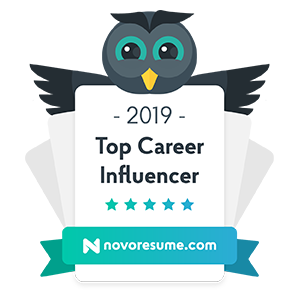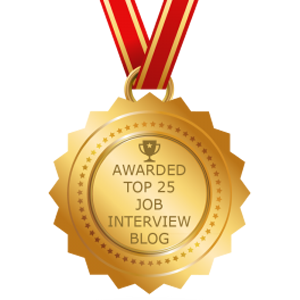If you’re applying to jobs online, you are likely ending up in Applicant Tracking Systems or ATS. An ATS is resume scanning technology that automatically accepts or rejects your resume based on information you provide. The ATS is designed to screen you out and can be tricky to maneuver. However, an ATS is not impossible to outsmart. In this blog post I’ve recruited the help of the experts at Jobscan to explain everything you need to know about the ATS and how to beat it with 6 easy tips.
What’s an ATS?
One of the biggest frustrations I hear from job seekers is that of the resume black hole. Maybe you can relate? You spend hours updating your resume and checking for typos. You finally work up the courage to hit the send button and breathe a sigh of relief as your perfect resume shoots off into cyberspace. You’re pretty pleased with your resume and the time spent tailoring yet it’s been a few days and no response. You wait to hear back and nothing. You wait… and wait some more before finally giving up. Yep. It’s official. You’ve entered a resume black hole otherwise known as the dreaded ATS. Game over.
An ATS is designed to help employers identify and eliminate unqualified job candidates. A type of software application, an ATS assists in managing the recruitment process by sorting through resumes. While human recruiters often conduct an initial review of resumes by looking for spelling errors or missing skills, Applicant Tracking Systems use keyword searches to accomplish the same task.
Why Hiring Managers Use ATS: The Good, The Bad and The Not So Ugly
Because an ATS rejects more than 75 percent of resumes submitted for a job posting, this automated tool makes the hiring process much more efficient. Which is great for companies but not so great for job seekers. At least 90 percent of employers are now using ATS – even smaller start-ups. So how can you get your resume past an ATS and into the hands of a human recruiter?
1. Don’t Just Copy Paste
ATS technology has advanced in recent years, and the software can now tell if applicants are placing large chunks of job descriptions into their resumes. To address this challenge, use a combination of language—both exact verbiage from a job ad and other keywords surrounded with your own unique text. There are many powerful keywords you can use in addition to the job description copy. Be sure to use the best word to describe exactly what you have done in your career experience.
2. Give Keywords Their Own Section and Also Use Them Throughout Your Resume
Remember that while the software program scans your resume first, the end goal is to have an actual person review it. Limit the length of the keyword section so you don’t appear to be gaming the system. The resume gets to human eyes eventually, and recruiters can tell if you’re cramming in an abundance of keywords. Title the special section “Skills” to keep it simple.
I’m a senior technology professional with 20 years of experience. I needed a job change, but I had not updated my resume for 7 years. I could have updated it myself (I’m in a senior professional how hard could it be). With a full-time senior management role, it became quite daunting to update my resume, and then I started evaluating services from many “Resume Writers” online. Moreover, I was looking for someone who can draft a resume by preserving technical details yet focusing on my accomplishments. Finally, my search landed in Noelle Gross Career Strategy’s website and the fantastic 5 star reviews her team was getting. I finally decided to take The Works Package. Within two weeks, Soozy was able to turn around my less than stellar resume to an incredible 2 pager. I got a call back from more than 75% of the jobs. I ended up with 3 offers at hand. On reviewing the entire journey I can confidently state that the resume (format and content) laid the foundation to this successful outcome, and I would recommend their service any day, especially the Works Package. I couldn’t have done it without the great team at Noelle Gross Career strategy and especially Soozy. They now have a loyal customer in me. – Biju, Technology Executive
3. Make Sure You’re Not Cutting Corners in Other Ways
Long lists of keywords throw up red flags within Applicant Tracking Systems. Additionally, stay away from using “invisible” words written in a white font color or listing out keywords in a Microsoft Word Document’s Properties tab.
4. Cover Letters DO Matter
Contrary to popular belief, cover letters are also scanned along with resumes” into an ATS. When a particular job description requires a cover letter, the software creates a “space” for that letter within an individual’s application profile. If the letter is missing the applicant is then penalized. When a cover letter is required, make sure it aligns with the resume to show that you’re a good fit for the job.
5. Use Important Keywords with Greater Frequency
The more a keyword appears in a job description, the greater weight an ATS places on that particular word. Use available resume analysis tools to identify the frequency of the most important keywords.
6. Know Which Parts of a Resume Matter Most
The areas of a resume most emphasized by ATS software and recruiters alike include: a) skills; b) education; c) years of experience; and d) names of past employers. Due to the wide variety of ATS options (they’re all different), it’s tough to create a resume that parses well in all systems. So build your resume using the four key components, but be ready to make slight changes when necessary.
Getting a resume past ATS software is much easier once you know what makes it tick. Use these resume tips and increase your interview chances!
If you want to be fully prepared to apply for jobs, with a keyword and ATS-optimized resume, check out our best-selling package, The Works. It covers all the bases—resume, cover letter, LinkedIn profile, and a 30-minute phone consult with one of our career strategy experts—to give you the best chance at getting hired.

![How to Get Past Applicant Tracking Systems [Resume ATS Strategy]](https://www.ngcareerstrategy.com/wp-content/uploads/2015/08/Online-Job-Application.jpg)
 What Hiring Managers Look for on Your LinkedIn Profile
What Hiring Managers Look for on Your LinkedIn Profile


